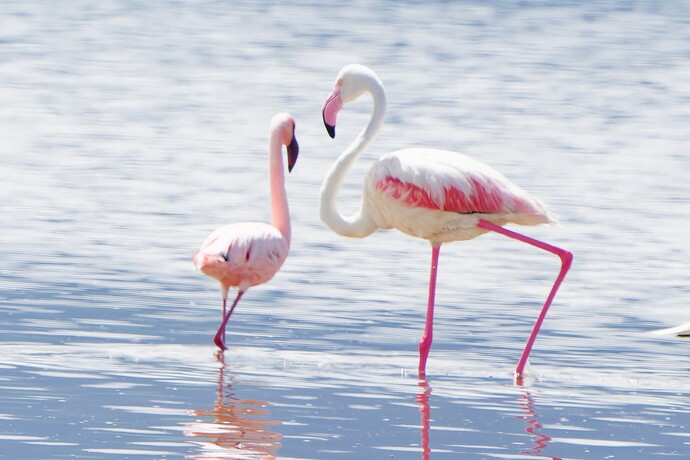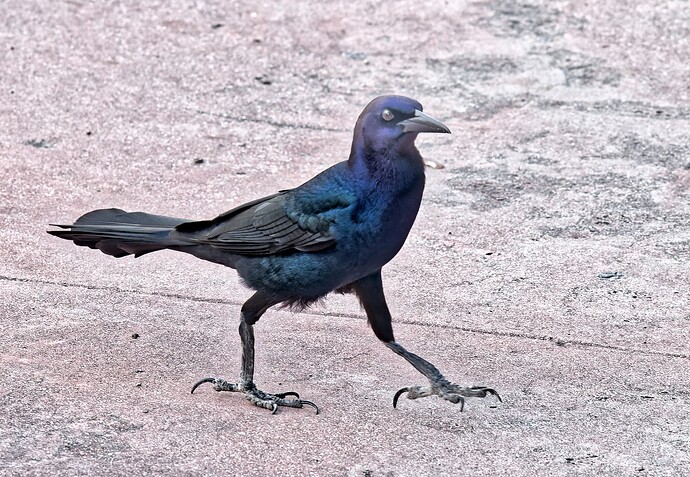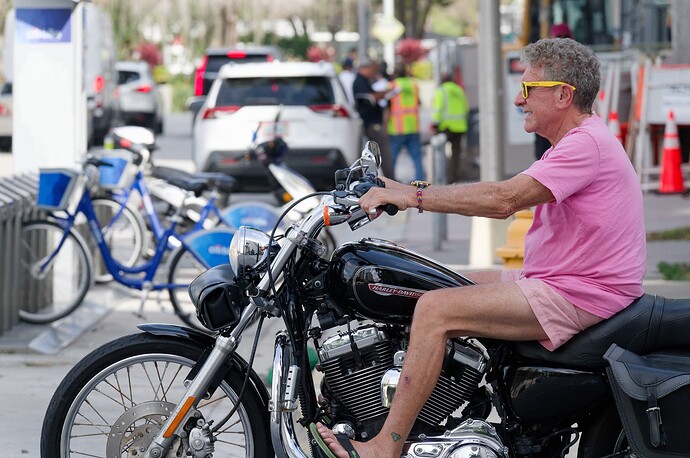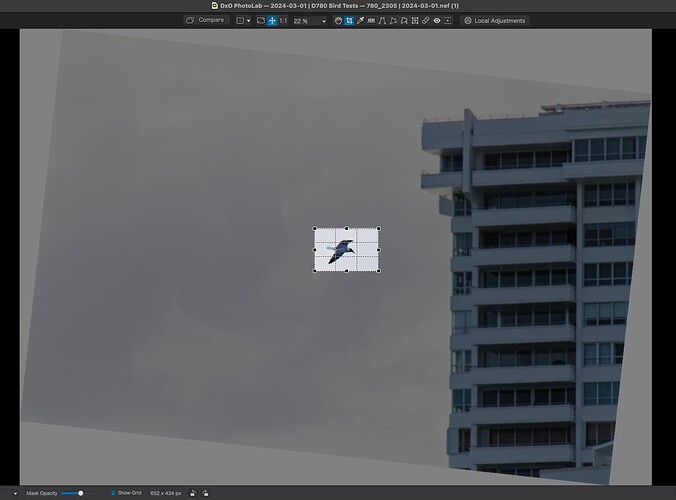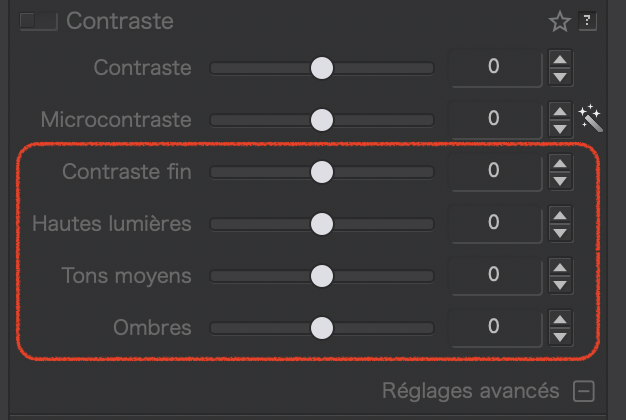Gosh! Thanks to all of you for this goldmine of useful information.
A short update - I set up and tried the red dot sight. Works as claimed. I packed it up, and put it away for the future. I suspect I should just start with the basics.
I set up the camera so I’m looking directly into the eyepiece, same as I almost always do. I can try other ideas later.
I wanted to do a simple test, so I set up the camera as if I was going to capture images in the upper eyepiece, which I almost always do. I set the ISO to 2,500 for a starting point, and left the camera in Aperture Priority mode. I won’t save my “birdie settings” until after I try this for real, perhaps this coming Sunday. I decided I should go for a walk down to a nearby road with lots of traffic, and try out the focus settings. No big deal, but why not.
First thing I came across as I went out my door was this black bird that enjoyed “hopping” all around me. So, I managed to get four images before it vanished into an alley. Here’s the result:
This image looked best with a small amount of “ClearView Plus” added, but I haven’t yet found a work-around avoiding that tool…
It seemed acceptable to me, but there was no challenge yet. I got down to Alton Road, with lots more traffic, and the camera did what I expected. Pressed the back-focus button, and then took a few image captures. Everything went as anticipated, but the car photos were thoroughly boring. Then a motorcycle came along, and I actually got an image I enjoy:
No sense of movement, and the bike wasn’t going all that fast, but this was starting to be fun, along with boring.
So, I walked back to my home, and sat on a bench overlooking Biscayne Bay. Several birds came by, and just as @Joanna anticipated, none of them were close enough to get a decent photo with my 300mm lens. This image is the closest I came to capturing a real image.
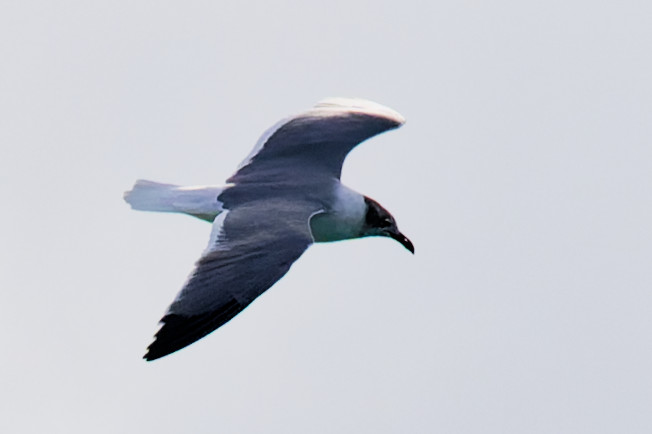
And to be fair, here’s the original image:
Hopefully I will be a lot closer to the birds this weekend. 300mm - nope. 600mm - doubtful. I need to be closer. Everything @Joanna said worked out just the way she expected it to.
…oh, and I tried out my SB-800 flash set for fill flash, as suggested in a few things I read, and I started reducing the “power”. I got to where I got a perfect photo of a sunset in front of me, and a fence six feet away or so came out perfectly as desired once I set the flash to the appropriate power. Maybe a newer/better flash would be able to figure this out on its own, but I’m going to stop worrying about this for now. I’ve got a working solution for my next visit to India and the hospital.
Thanks to everyone for all the feedback.
